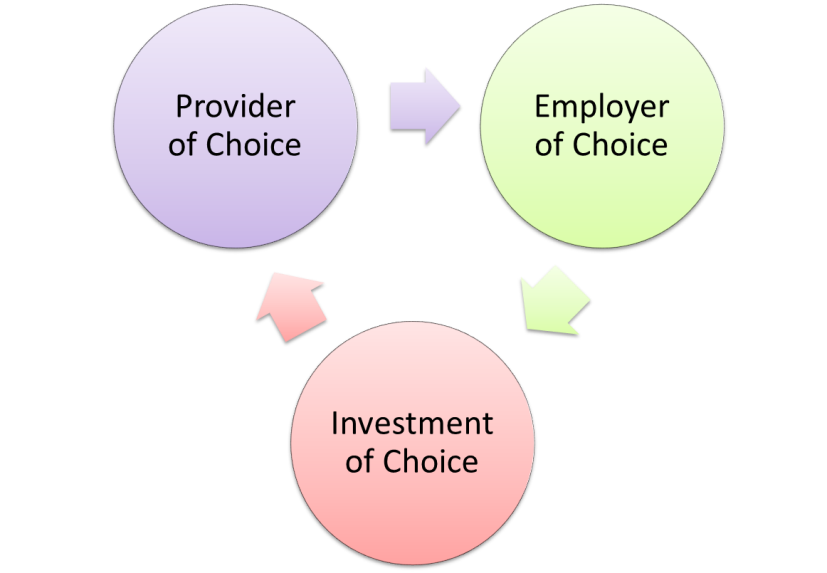As IROs, we sometimes struggle to convey the concerns and interests of investors to our C-suite. For those on the front lines of running a business, regardless of the sector, the practice of investor relations can seem a little arcane and removed from reality. Let’s face it, most investors do not have an industry background and view companies from a financial ivory tower. It is the job of the IRO to build a communications bridge across the gap between that ivory tower and the gritty reality of day-to-day business operations.
That gap can sometimes lead to lack of understanding and respect. We’ve all been there with the CEO or CFO who feels that the ‘12-year-old’ investor across the table is wasting his time. This is not a good place to be – neither for the investor nor senior management. Bringing investor concerns to the C-suite confers the most external credibility to an IRO, according to Rivel’s Global IR Best Practices Report in 2014. But at the same time IROs must maintain internal credibility and not be marginalized along with the ‘12-year-old’ investor!
So how do we build that bridge and make investor concerns understandable and credible to senior management and beyond? I suggest bringing in elements of psychology and a humanizing approach.
 My company, Deutsche Post DHL Group, has long used our variation on the ‘triple bottom line’ framework to align our corporate strategy and operations. The concept is simple: if a company is the provider of choice, employer of choice and investment of choice, then it will thrive, with good revenues, productive growth and steady source of capital. If it does not achieve those three bottom lines, a company will fail to thrive.
My company, Deutsche Post DHL Group, has long used our variation on the ‘triple bottom line’ framework to align our corporate strategy and operations. The concept is simple: if a company is the provider of choice, employer of choice and investment of choice, then it will thrive, with good revenues, productive growth and steady source of capital. If it does not achieve those three bottom lines, a company will fail to thrive.
Although the meaning of ‘provider of choice’ for customers and ‘employer of choice’ for employees is pretty intuitive, it’s not always so obvious what contributes to being the ‘investment of choice’ for investors.
Does it mean generating a certain level of profit? Free cash flow? Return on capital employed? And even if we set financial goals and key performance indicator (KPI), how do we translate those goals down to the level of the shop floor? The key is to find the elements that all three bottom lines have in common.
Sticking to the theme of threes, it turns out that the people involved with all three bottom lines have three desires in common – no matter what role they play. Those desires are for trust, focus and value.
Provider of choice
Starting at the top, it’s clear that as a customer you need to be able to trust a company or provider to maintain its customer promise, whatever that may be - to build a product or deliver a service that meets high quality and reliability standards. As a customer you also want the focus of the provider on you. That’s what a customer-centric approach is all about. Finally, the product must come at a reasonable price. That’s value.
Employer of choice
If you are an employee, it’s very similar. You need to be able to trust that your employer provides a sustainable and predictable place to work. You need to know that your job will be there when you get up in the morning! You also need to feel that your employer is focused on your well-being, that you will be appreciated for your contribution and be respected by those around you. Finally, you need to be paid a reasonable wage. That’s value for an employee.
Investment of choice
So how do these desires apply for an investor? Remembering that the competition for capital is fierce, and that the investor can take his or her money anywhere, avoiding the risk of disappointment (and losing money!) is paramount.
The investor must be able to trust management, their strategy and the execution of that strategy as outlined. This is why Rivel studies have repeatedly ranked management credibility as the top investment criterion. The investor also must believe that the management is focused on and aligned with his goal – achieving the highest possible, risk-adjusted return on his investment.
Every KPI that an investor considers distills down to return on investment. So being able to build a credible model of all elements that feed into returns, starting with revenue growth through earnings before interest and taxes margins and cascading into the components of free cash flow, is absolutely critical.
If management demonstrates through reporting, transparency and consistency that it shares the same goal of risk-adjusted return and appreciates the steps investors need to take in order to feel secure, investors will be very appreciative. Finally, there has to be value for the investor too. The share price must be reasonable in the context of expected return.
If you stand back, you can see how this framework neatly aligns the demands of customers, employees and investors with the way a company conducts its daily business, so that the demands of each element can be translated into action. If management and employees understand the three desires and how they satisfy each of the three bottom lines, people in production and sales will work on quality and customer-centricity, people in management roles and HR will work on respect and sustainability, and CFOs, controllers and others with financial responsibility will work on productivity, sustainable growth and predictable cash flows.
Why is this framework so powerful and so easy to grasp? Because it is based on the fundamental human needs as outlined by attachment theory. Here comes the psychology element, courtesy of the research of John Bowlby and others.
Let’s go back and think about the desire for trust – focus – value from the perspective of a child. A child must be able to trust the parent or caregiver to be present and care for them at all times. A child needs to know that the focus of the parent or caregiver is on their well-being at all times – ultimately the first form of customer-centricity! Finally, there needs to be a reasonable framework of financial support – the value of having basic needs covered.
With the security and demonstration of loving care provided by these three attachment criteria, a child will thrive. This is the principal finding of attachment theory and can be applied broadly to all aspects of human development. As we mature, we never outgrow these fundamental needs, and the success of all human relationships can be measured by the degree to which they are filled. Think about the relationship qualities we seek in a partner or spouse, or even in a political candidate. You will find that the framework works universally.
I like to think of it in terms of comfort. Can I go to sleep at night? Whether I am a child, a customer, an employee or an investor, I need all three desires to be filled before I can find that peace of mind. How often has an investor closed a meeting by asking management, ‘What keeps you up at night?’ We are all seeking the same thing.
Seen from this human perspective, there is no communication gap to bridge. The C-suite can understand that the demands and concerns of investors all spring from the same, common source. Equally, the solution to addressing investor demands is the same as what we easily understand for customers and employees: fostering trust, demonstrating focus and creating value.










